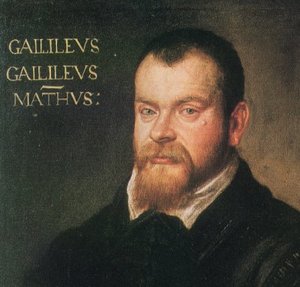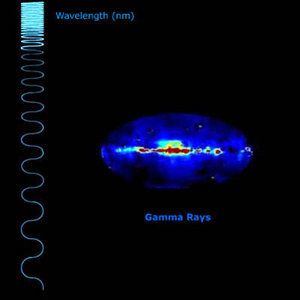Hyper overview
Objective
Investigating two of the fundamental forces of nature, gravity and electromagnetism, Hyper may help in extending Einstein's theory of General Relativity.

http://www.esa.int/science/hyper (Ctrl+D)
For more in-depth scientific and technical details of our Space Science Programme and missions, follow this link.
Mission

Hyper will investigate the fundamental nature of the Universe. It will loop the Earth, once every 100 minutes, watching distant stars for any variation in its own expected movement. Using these observations to precisely measure its orientation, Hyper will investigate two of the fundamental forces of nature: gravity and electromagnetism.
In the course of its mission, Hyper will provide new constraints on the limits of Einstein’s General Relativity and may point scientists towards the theory necessary to extend it.
The mission will test new instruments known as ‘cold-atom interferometers’. These instruments could have an enormous range of applications both in future space missions and across industry-wide markets on Earth.
What’s special?
Hyper is designed to investigate some of the most fundamental underpinnings of our knowledge of the Universe. In one experiment, it will examine the structure of space around the Earth, with a precision that has never been possible before.
In 1916, Albert Einstein published his Theory of General Relativity. In it, he gave the world its most complete description of gravity yet. He postulated that gravity resulted from distortions in the fabric of space. He called this fabric the space-time continuum and explained how it curved around massive objects, resulting in gravity. For the next 80 years, scientists have been examining Einstein’s extraordinary theory and using it to understand the Universe at its largest scales. In 1918 , just two years after the publication of Einstein’s theory, two scientists, J. Lense and H. Thirring, showed that a rotating object produces a slightly different gravitational field from a stationary one. Measuring this difference, known as the Lense-Thirring effect, would provide a crucial test of General Relativity. However, the effect created by a slowly rotating object such as the Earth is almost insignificant and, until now, nobody has ever detected it precisely. Hyper will be the first mission sensitive enough to make a detailed map of this effect around the Earth.
In astrophysics, there is a class of objects known as active galaxies. Gigantic jets of matter squirt away from the centres of many of these galaxies but scientists do not really know why and how. Astronomers believe that the centre of each active galaxy harbours a massive, rotating black hole. The immensely strong gravitational field of the black hole will produce exceptional Lense-Thirring effects. Some scientists believe that the jets may be produced in this way. Hyper’s investigation of the Lense-Thirring effect could therefore help astronomers understand active galactic jets.
Hyper’s other main scientific objective is to measure the strength of the force that provides us with electricity and magnetism. Known as the electromagnetic force, its strength is symbolised by a number, the so-called ‘fine-structure constant’. Scientists disagree about the value of this constant, based upon the measurements taken so far. Hyper will measure the fine-structure constant in a unique way, that can only be performed in space, providing a highly accurate, highly reliable measurement of its value.
Spacecraft
Hyper measures about 1.5 by 1.5 metres, with a mass of about 1000 kilograms. At its heart are sophisticated devices known as cold-atom interferometers. These technological innovations are only experimental prototypes at present. However, they are very interesting to the theoretical physics community, and many research laboratories around the world are actively pursuing their improvement at present.
Cold-atom lasers rely on the way in which atoms slow down as they are cooled. Usually, atoms in a gas move around like billiard balls, bumping into each other. However, when their temperature drops to a few thousandths of millionths of a degree above absolute zero, they become incredibly slow. Collections of atoms then begin to behave more like a wave than as individual particles. This new state of matter is known as a ‘Bose–Einstein condensate’. Incredibly, once the atoms are in this state, the wave they create behaves in a similar way to laser light.
Interferometers are devices that can measure phase differences between two light beams that have been generated by a single laser then split into two components and sent along different paths. Cold-atom interferometers use a similar method. One application is that they could function as extremely sensitive gyroscopes.
Hyper will exploit this ability when trying to measure the Lense-Thirring effect, as well as during its other scientific investigations. Hyper is an abbreviation of ‘Hyper-precision cold-atom interferometry in space’.
The spacecraft’s payload module must be as stable as possible to measure very small movements. This is achieved by eliminating all movable parts and by using no liquids of any sort that could move about creating unwanted movement. The payload module will be mechanically and thermally ‘isolated’ from the service module, so that heat and vibrations cannot pass between them.
Hyper will communicate with Earth once a day for just seven minutes, using the 15-metre radio dish at Kiruna, Sweden. During this time it will transmit the previous day’s scientific data along with information about the spacecraft’s status. The power for the spacecraft will be provided by a circular solar panel that will always point towards the Sun. A battery on board the spacecraft will store energy for the times when Hyper’s orbit unavoidably takes it into the shadow of the Earth.
Journey
A Russian-designed, low-cost launch vehicle will launch Hyper into space from Plesetsk, Russia. This site is located at almost 63° north of the equator and its high latitude is necessary because Hyper must be placed into a polar orbit, completing one orbit over the Earth every 100 minutes.
The launcher will place Hyper into a circular final orbit about 1000 kilometres high. This orbit was chosen because the drag of the tenuous upper atmosphere on the spacecraft could mask the sought-after Lense-Thirring effects, which also decrease rapidly with increasing altitude. The orbit must therefore be high enough to escape the atmospheric drag, but not so high as to render the effect so weak as to be impossible to measure.
History
Hyper was proposed in October 1999 as a low-cost, ‘Flexi-mission’ that could be launched in the 2008–11 period. In February 2000, Hyper was identified as the mission with the highest scientific potential in the fundamental physics research area.
Consequently, it entered a period of feasibility assessment in 2000 at ESTEC, in the Netherlands. The assessment showed that the payload technology was not mature enough. After a follow-on study, in the hope it might be launched beyond 2012, ESA supported a dedicated industrial study, which ended in February 2003. After assessing this study’s findings, ESA will take the decision about whether to continue the development of this mission.
Partnerships
Following the initial proposal of Hyper, the industrial study has been undertaken in collaboration with European partners. The prime contractor for this study was Astrium GmbH (Germany), who worked in collaboration with Astrium Ltd (United Kingdom), Officine Galileo (Italy), and ZARM, Germany.
The industrial study was supported by representatives of the following European institutes:
- Systèmes de Référence Temps Espace, Observatoire de Paris (France)
- Laboratoire Charles Fabry de l'Institut d'Optique, Orsay (France)
- Institute of Quantum Optics, Hannover University (Germany)
- Rutherford Appleton Laboratory (United Kingdom)















 Germany
Germany
 Austria
Austria
 Belgium
Belgium
 Denmark
Denmark
 Spain
Spain
 Estonia
Estonia
 Finland
Finland
 France
France
 Greece
Greece
 Hungary
Hungary
 Ireland
Ireland
 Italy
Italy
 Luxembourg
Luxembourg
 Norway
Norway
 The Netherlands
The Netherlands
 Poland
Poland
 Portugal
Portugal
 Czechia
Czechia
 Romania
Romania
 United Kingdom
United Kingdom
 Slovenia
Slovenia
 Sweden
Sweden
 Switzerland
Switzerland



























